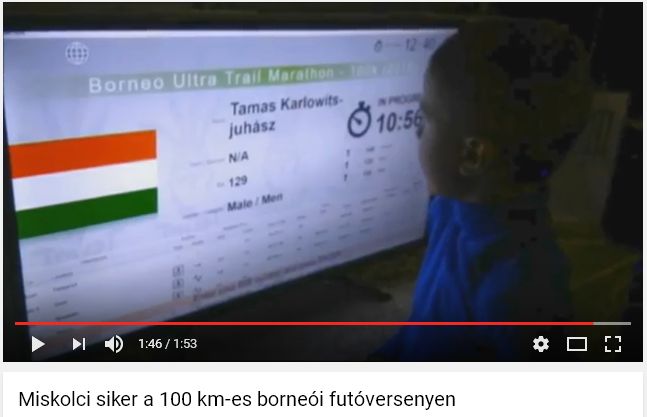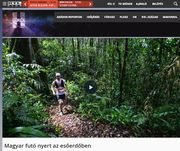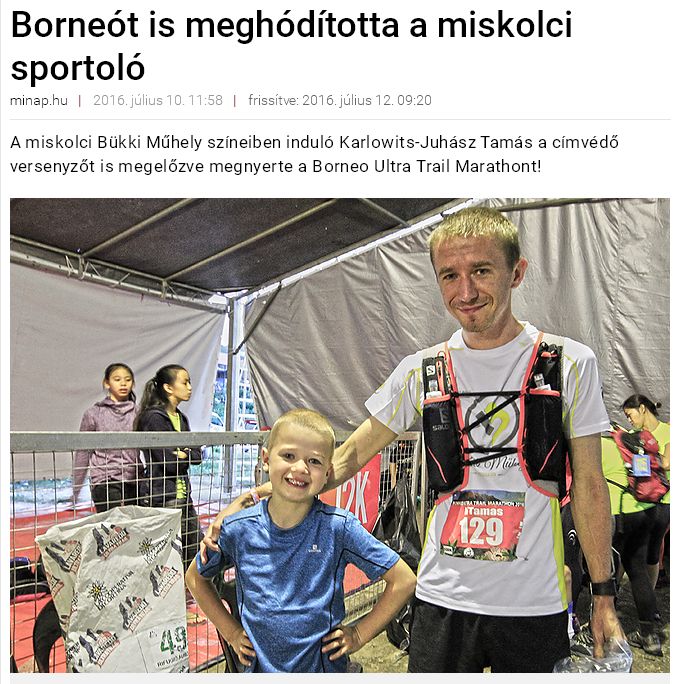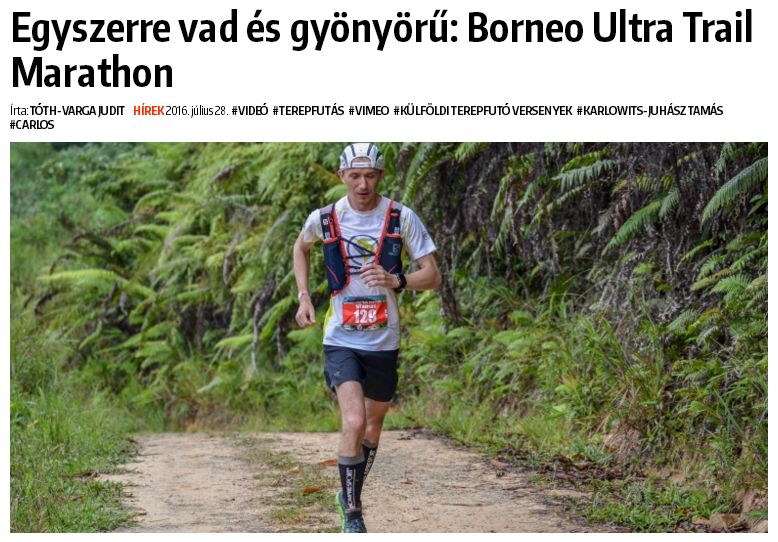TREKKER.HU
KARLOWITS-JUHÁSZ TAMÁS HONLAPJA
BORNEO ULTRA TRAIL MARATHON – PATH TO THE UNKNOWN
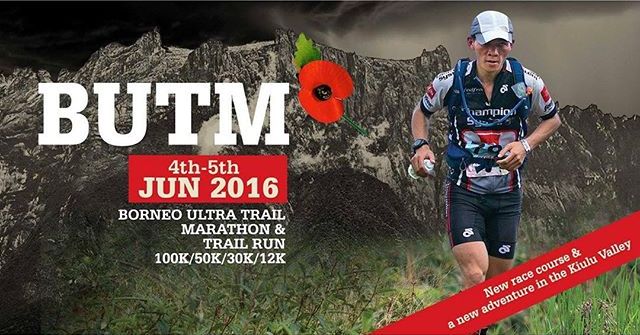
It’s the end of day 14 after the race.
On my laptop screen I can see a photo of the highest mountain in Java, the active volcano Semeru. We were to climb this mountain today – instead I’m lying in a warm bed in a three-star hotel, skinny and feverish, suffering from coughing and joint gout, trying to finish up my report. Well, yesterday I had nothing but three biscuits and about 1 litre of water, while my Javanese guide led me on a three-hour walk, climbing on the bamboo ladders of Coban Sewu Waterfall. My present state of mind must be like that of Javanese people after their spiritual cleansing at Ramadan – anyhow, I feel my mind is clear enough now to tell the rest of my story of the race.
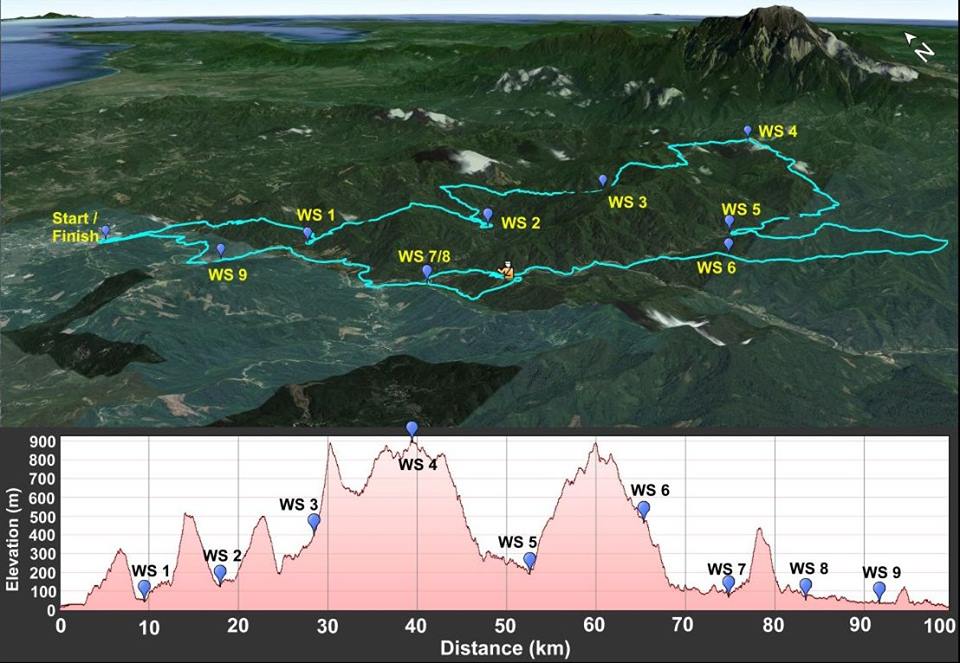
The track and the profile of the race course
When I entered the competition this January, I didn’t have the faintest idea of what to expect in Java. Looking back on that period more than 6 months ago, I have had to realise that what happened was going on in the exact same way as my preparation for the Ultra Trail Tour Du Mont Blanc 12 years ago: I was preparing for something I had never done before, at least not like this.
This is just running, after all, it’s just like all the other competitions where you have to reach the finish line – or is it?
I set off with my family on 31 July, flying from Budapest to Doha (Katar), then to Kuala Lumpur (Malaysia), and eventually to Kota Kinabalu (Malaysia). The journey took a whole day and was rather eventless, apart from changing planes. Until the very last moments, the air-conditioned airports hid from me the truth about the climate in Borneo, so when I finally stepped out into the open air, the sultry tropical air took me by storm.
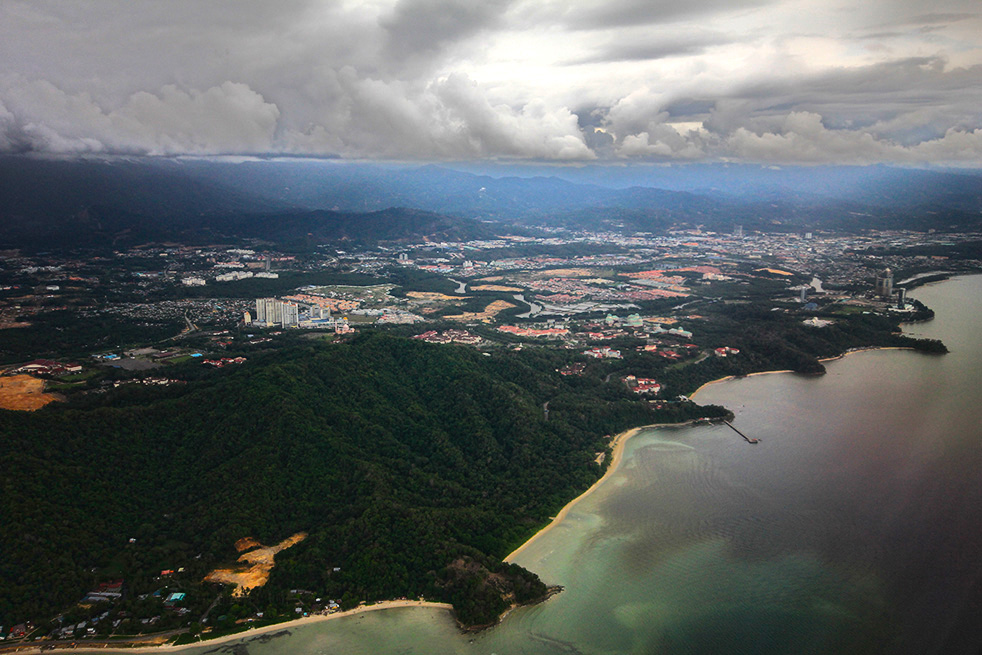
Kota Kinabalu
Before the race I only had two days to rest up and to somehow deal with the 7-hour time difference. At 7 am on 2 June – that is, 12pm CET – I went for a short run to warm up a little. At first I had no problem with the humid heat, but a few kilometres later I already felt running to be pretty tiring. By the end of the merely 10K run I was totally exhausted and dared not think about what could happen in two days.
On the day before the race I went to the hotel about 100 metres from our accommodation, went through registration, compulsory equipment check and got my race pack. Then a bus took us to Tuaran, which was only a 15-minute drive from the starting line but this still meant a major problem: in lack of taxis and public transport, I needed someone to drive me to the start. In the end, one of the staff at our accommodation offered his help, so I could spend the rest of the day relaxing and building up.
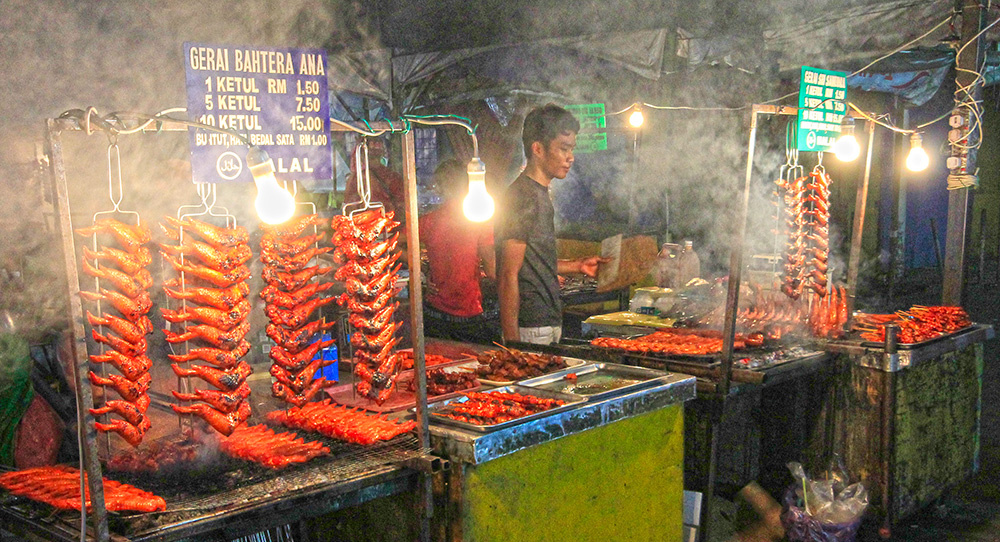
Kota Kinabalu the market, with plenty of protein and carbohydrates
I arranged meeting up with our Malaysian chauffeur at 5.30 in the morning, then the three of us (Virág, Marci and I) drove to the neighbouring Tamparuli, where we quickly found the race centre.
At the edge of town, by the river, there was a tent and a wooden building with the facilities waiting for the runners to compete at distances of 12, 30, 50 and 100 kilometres. In the tent I once again checked my equipment and handed down the packs to be used at 50 km and the finish line.
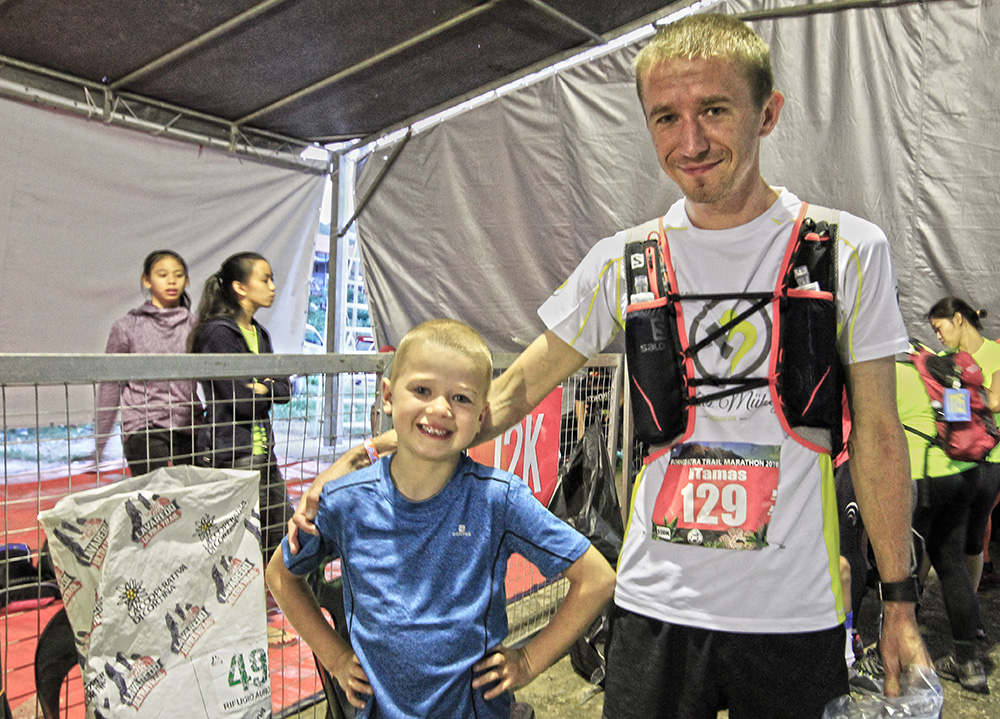
Before the start. I think I'm ready.
I wasn’t surprised that only one or two of the competitors seemed to have come from Europe; there were only four non-Asian runners who entered the 100K race – including me – after all. The appearance of the “locals” wasn’t much different from what I experienced at European competitions. Most of the competitors wore the latest “trail” gear, mainly Salamon and TNF. It was interesting to see that sporting goods manufacturers also took notice of female Muslim runners – they were wearing so-called sports hijabs.
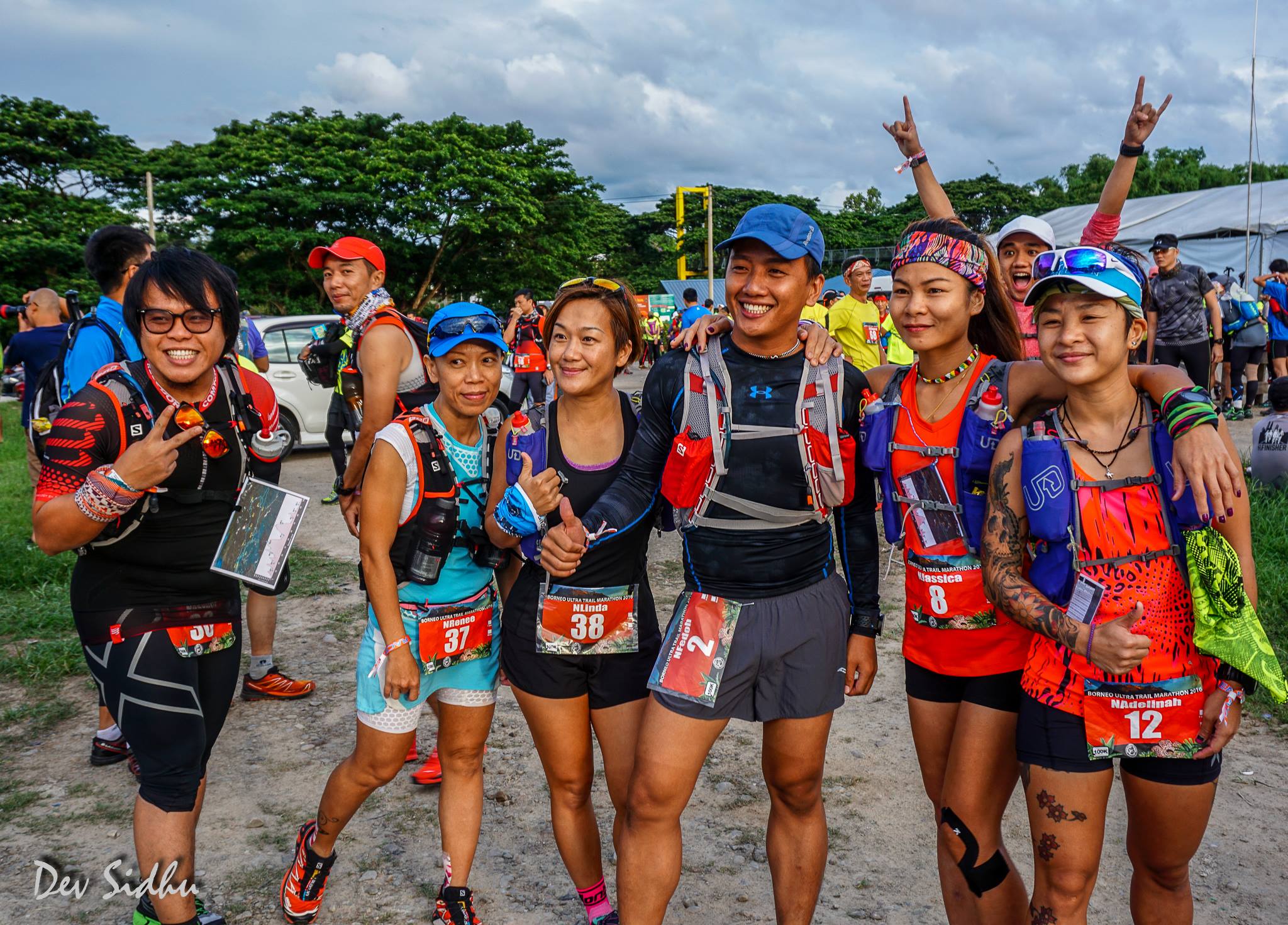
Tamparuli - smiles before the start
On the spot the main organiser gave us detailed instructions concerning the problems that might occur during the race and specifically called our attention to refilling our water bottles up to the brim at the water points. Indeed, all these instructions needed to be taken seriously here. It was still monsoon season and an unexpected rainstorm could make immediate rescue impossible.
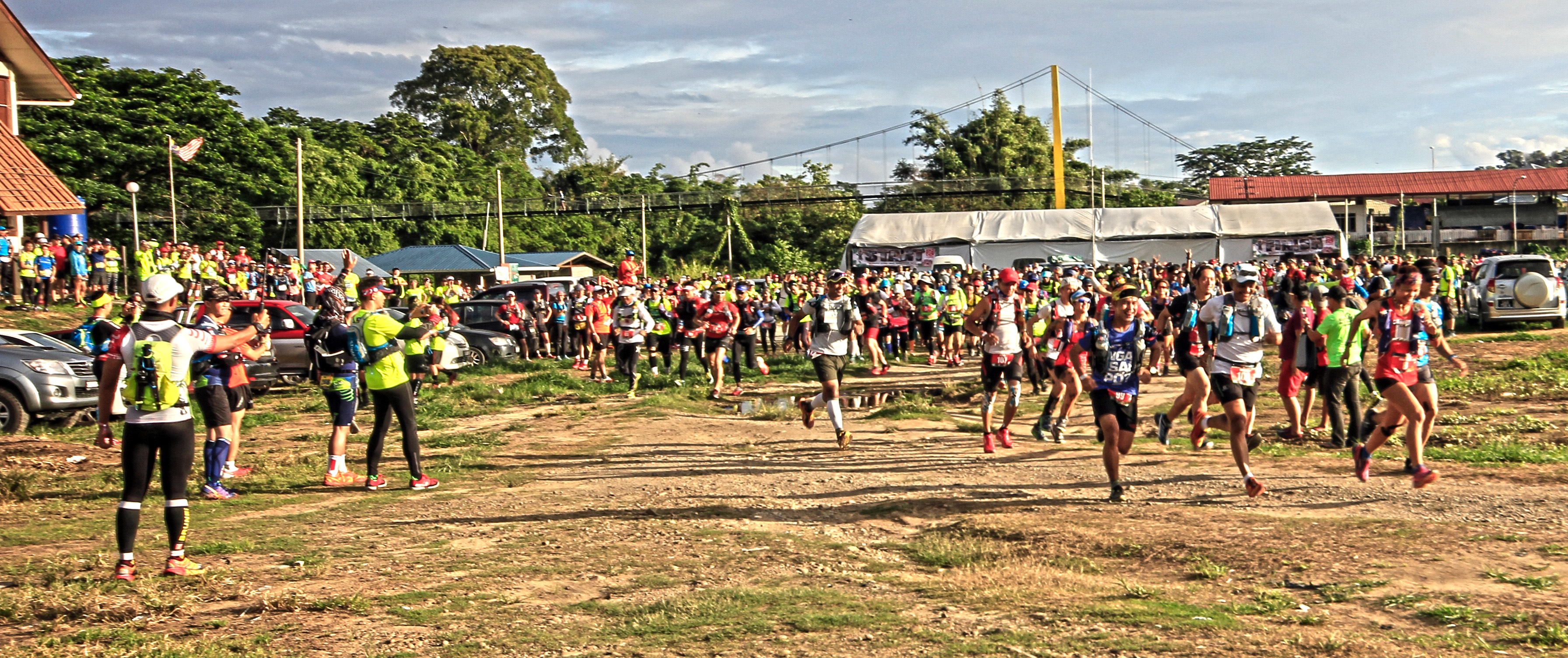
Tamparuli - The race start of the 100K runners
A few minutes after 7 am the 100K runners started the race to avoid the jam at the suspension bridge nearby. Although I jogged a little to warm up, I was quite taken aback by the crazy rush right after the start – it was probably because after a few metres the path narrowed down. Reaching the path, the first block of runners slowed down to walking speed, but since it was the 2014 year’s champion Safrey Sumping leading, it didn’t even occur to me to overtake.
I’ve run about two kilometres when I found myself alone in the front with him. When we left the town we reached the first suspension bridge, then came a concrete road which at some parts ascended steeply, and Safrey changed his speed to walking. All the way, I was either running next to him or behind him, but it seemed to me that he wanted me to take the lead. The trail was marked by red and white ribbons placed quite frequently, but because of the thick vegetation I had to pay close attention to notice them.
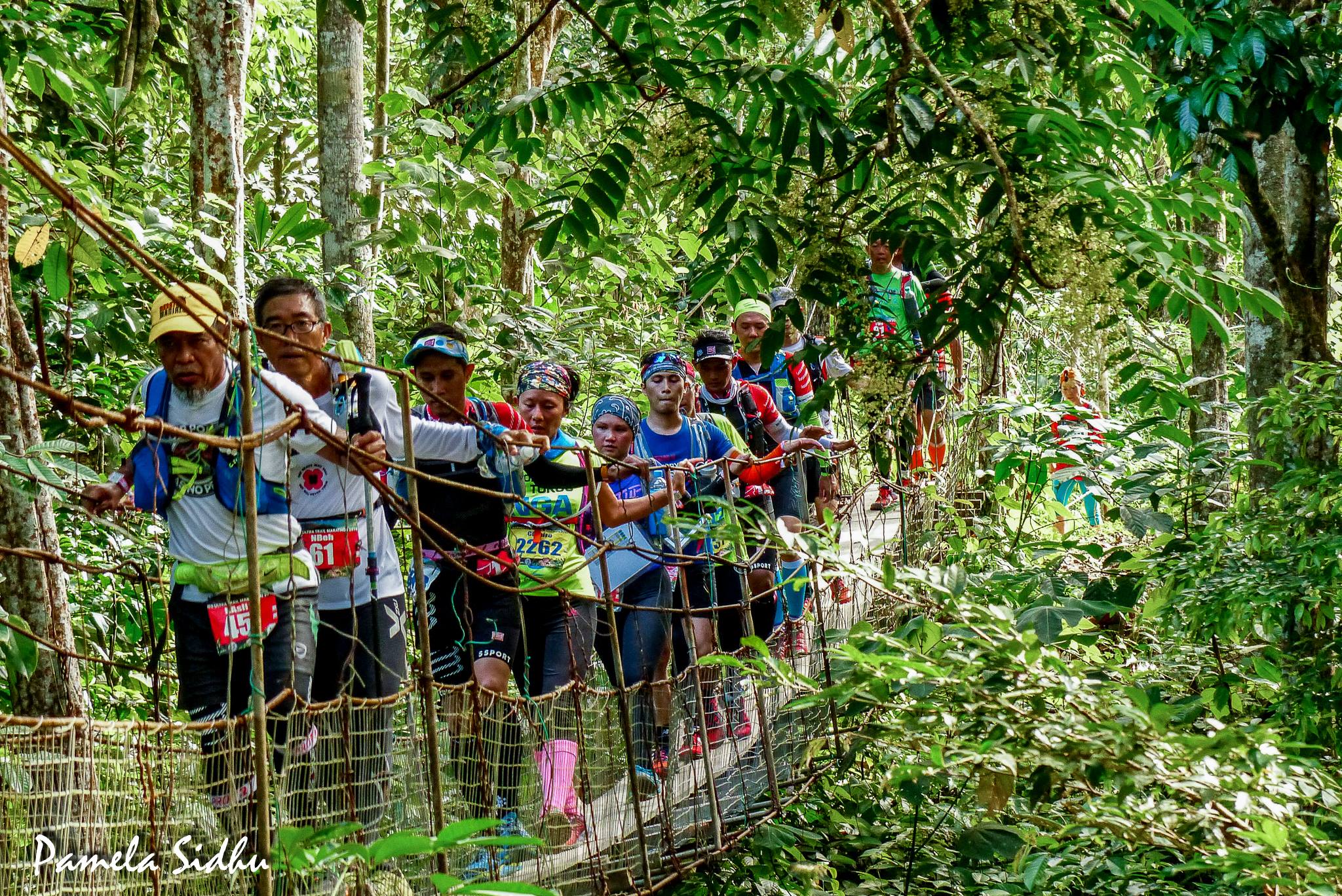
Crossing the first hanging bridge – there were a few more to come
At the third kilometre we suddenly left the road and headed into the real jungle. I simply could stay behind Safrey – in a way he forced me to take the lead uphill. I was racing up the steep path vigorously. At some parts it was so narrow that I was constantly brushed by the thick underbush. I tried to take every step and grab very carefully because I didn’t want to get caught on a thorny plant or use it as a handhold. As I was minding my steps I noticed a millipede the size of my palm crawling under the dead fallen leaves. Taking a closer look at the vegetation I expected to accidentally grab a snake or get stuck in a giant spider web. My initial fright was further intensified by the sounds of the jungle around me – some were so strange that if I heard a recording of them I probably wouldn’t believe they were not computer-generated. On top of that, occasionally a group of monkeys informed us loudly that we were entering their territory.
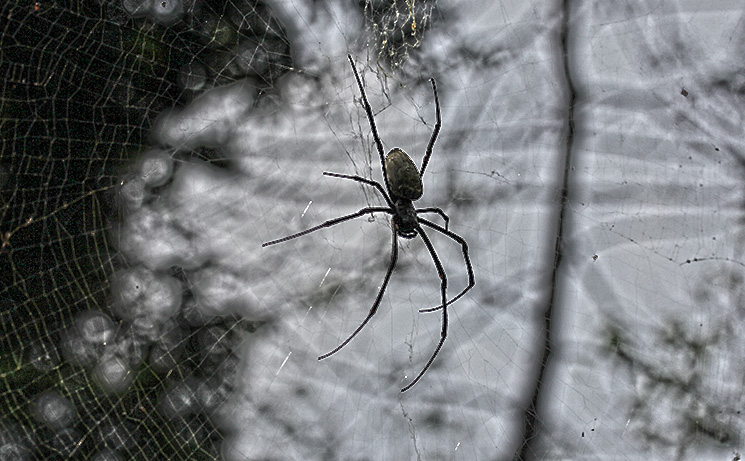
A more than 20 cm Epeirid spider in its 3 m web
After a while I was getting used to the strange world around me and realised that I might only be able to avoid meeting some more aggressive representatives of the local flora and fauna if I was lucky.
As I reached the top I stopped and let Safrey overtake me, although it seemed that he would rather stay behind. There was a steep downhill ahead of us. Climbing down I began to feel a blunt stiffness in my thighs, like an increasing cramp, which really frightened me, because we haven’t even done 10 kilometres.
In the past 30 minutes there was no interaction between Safrey and me, apart from a few smiles. Eventually he broke the silence. We introduced ourselves and tried to learn as much about the other as we could. I intended to paint a plain picture of me as a hobby runner who would only like to reach the finish line.
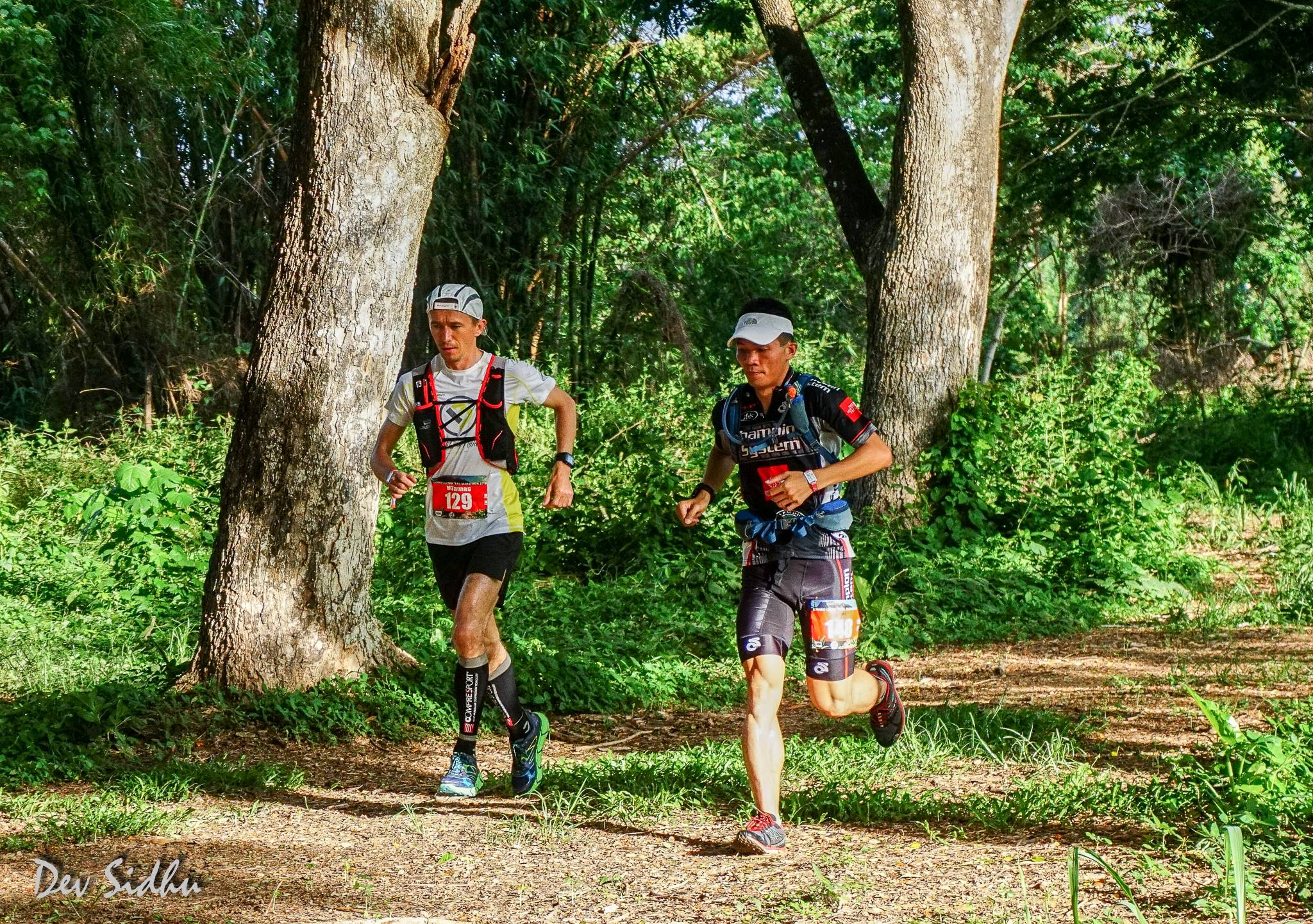
Head to head with Safrey Sumping
At the bottom we found the first water point, so I quickly refilled my bottles. At the start I only took half a litre with me, which was just enough water up until this point.
Safrey continued running without a refill and before long I realised why. In a few minutes we came across a jeep which was his own mobile water point with his family. “It’s easy this way,” I thought to myself, “and I shall get by my own mouth water.” (Anyhow, I took a tasty banana from my wife.)
After a short plain passage we went over another suspension bridge and embarked on the next climb. Safrey was first, but after 10 minutes of climbing it turned out that we got lost so we turned back and found the turnout almost at the bottom of the hill. By the time we reached this point the first runner doing the 50K race – the top Malaysian runner David Simpat – caught up with us. Initially he also entered the 100K race but it seemed that since he was from the same club as Safrey they decided to split their squad.
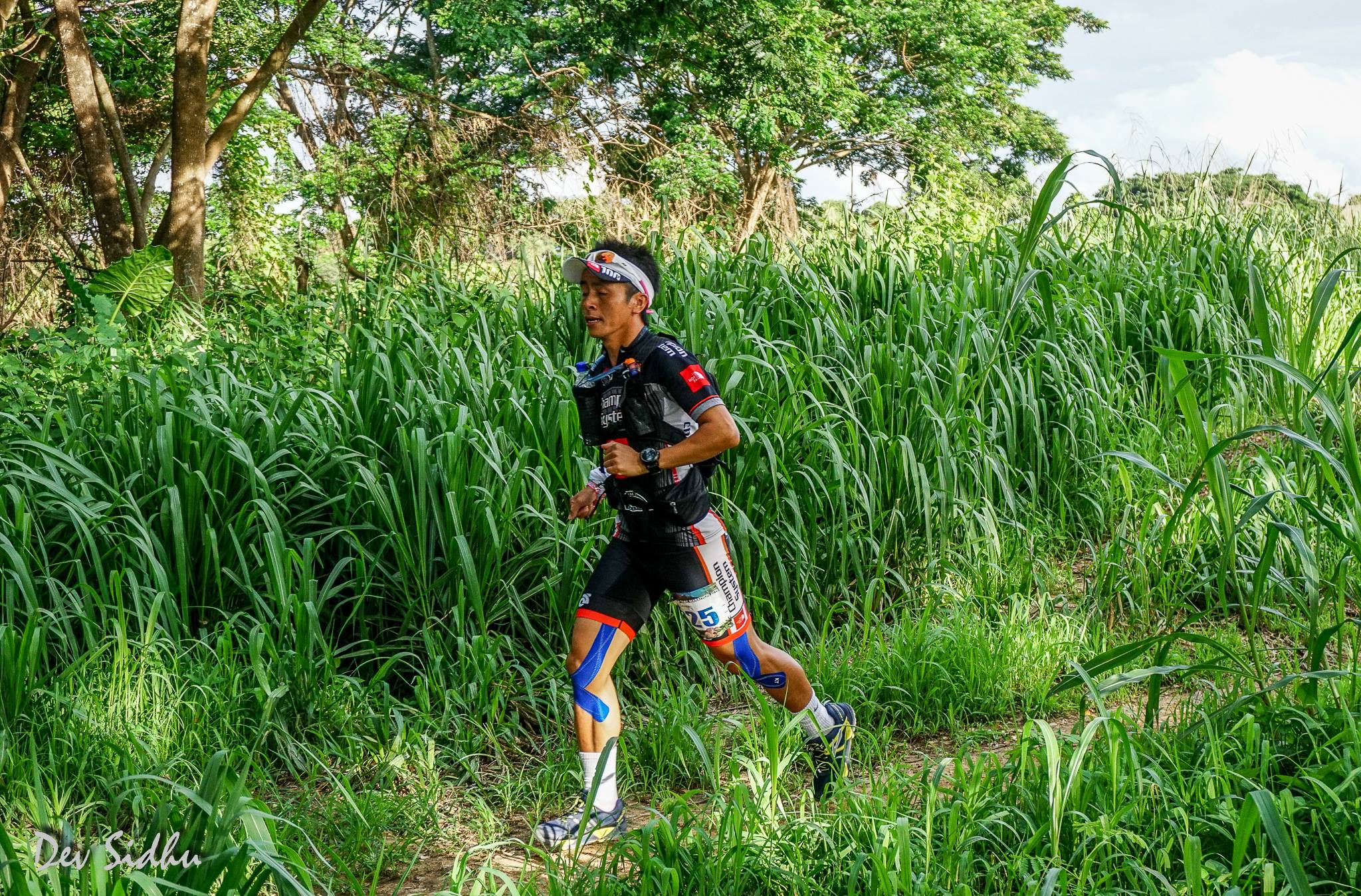
David Simpat - the winner of the 50K race
We let David overtake us, and he moved forward at a fast pace. Being the champion of the renowned Mt. Kinabalu Climbatlon he probably would have set a different pace.
I looked at my watch and it hit me: the fairly good pace we were running at initially was getting worse and worse. We almost always had to walk uphill instead of running. I was very displeased at Sufrey because he wouldn’t run ahead of me, so we took every chance to fall behind the other. After a while I had enough – I overtook him and accepted the leading position.
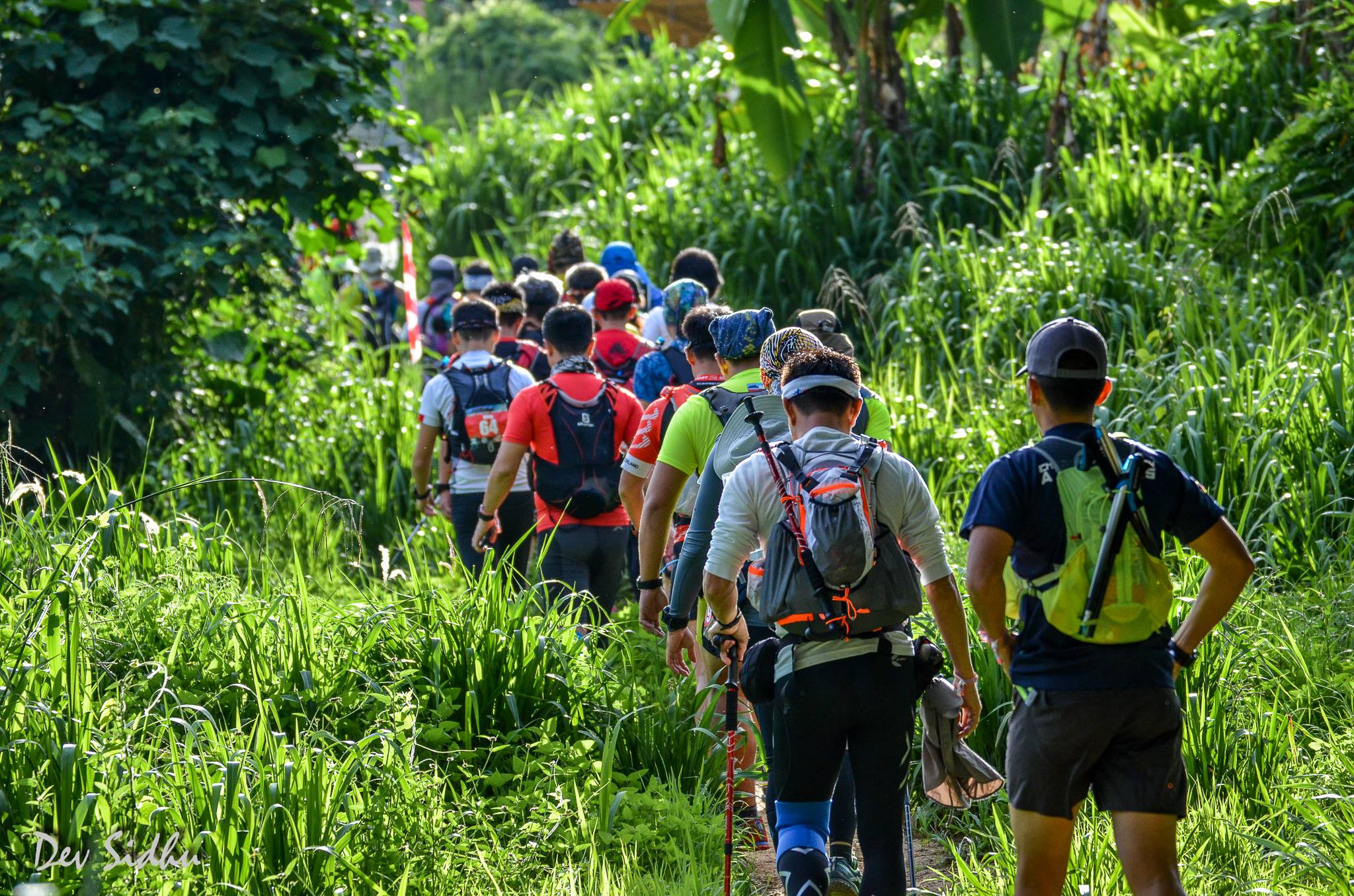
The field of runners speeding along the narrow paths in the overgrown underbush
Miles and miles of a steep uphill climb followed on a bulldozed road; we run for 3 hours with 400 metres ascent. As time passed, the temperature was becoming more and more intolerable. In sunny and dead calm parts I felt I could melt onto the road at any minute. My shape depended entirely on the temperature: as it was increasing my condition was getting worse, but when we got some shadows and wind my strength suddenly returned to me. There were some parts when we felt too exhausted to walk, let alone run. It began to dawn on me that there would be no running here – the whole race was turning into a performance trip.
We reached the peak very slowly and had a long and steep descend ahead of us. In the meantime I ran out of water and was looking everywhere for a stream or leat that could help me cool my body. Getting to the valley I was disappointed to see that there was no sign of a water point there as I expected, nor any checkpoints for that matter.
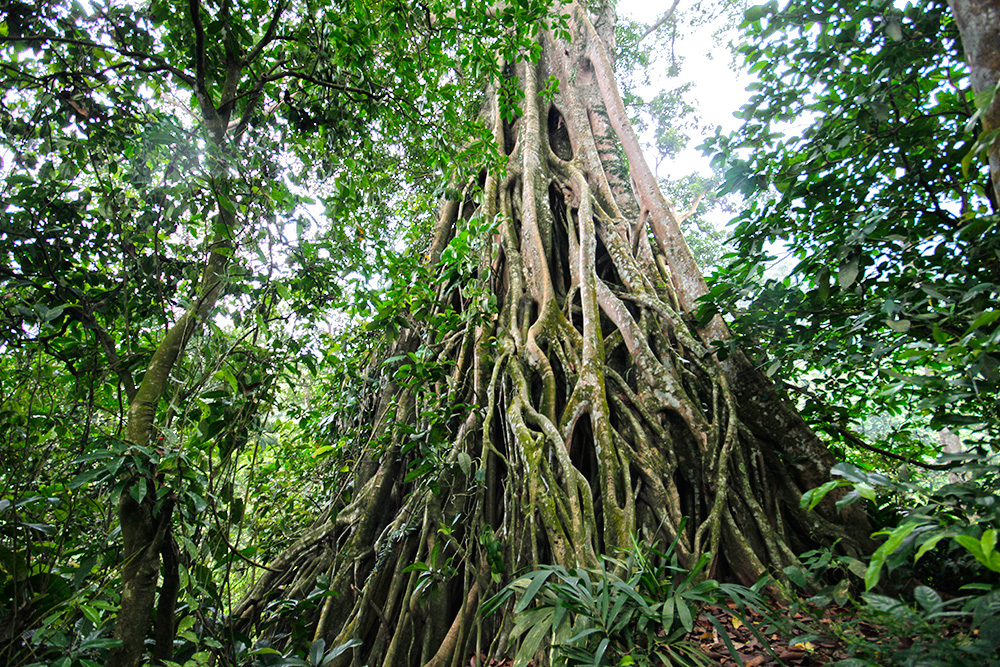
Rainforest
I had already done the first 20 kilometres by then. What followed was a similar climb with 400 metres ascent. Luckily we found a little stream so we drank and filled up our water bottles. We could even wash ourselves with the cool water. Surprisingly, we could descend on a ribbed concrete road (because the road was so steep that probably this was the only way to make walking possible). By the time I reached the valley my thighs had gone totally dead and I felt dizzy with all that jarring.
Then came another uphill climb full in the sun, so when we got to the water point at 29 kilometres I was totally in ruins. My stopwatch showed more than 3 and a half hours which meant I would not reach the finish line fast; I was even warned to take as much water with me as I could because the hardest part was still ahead of me.
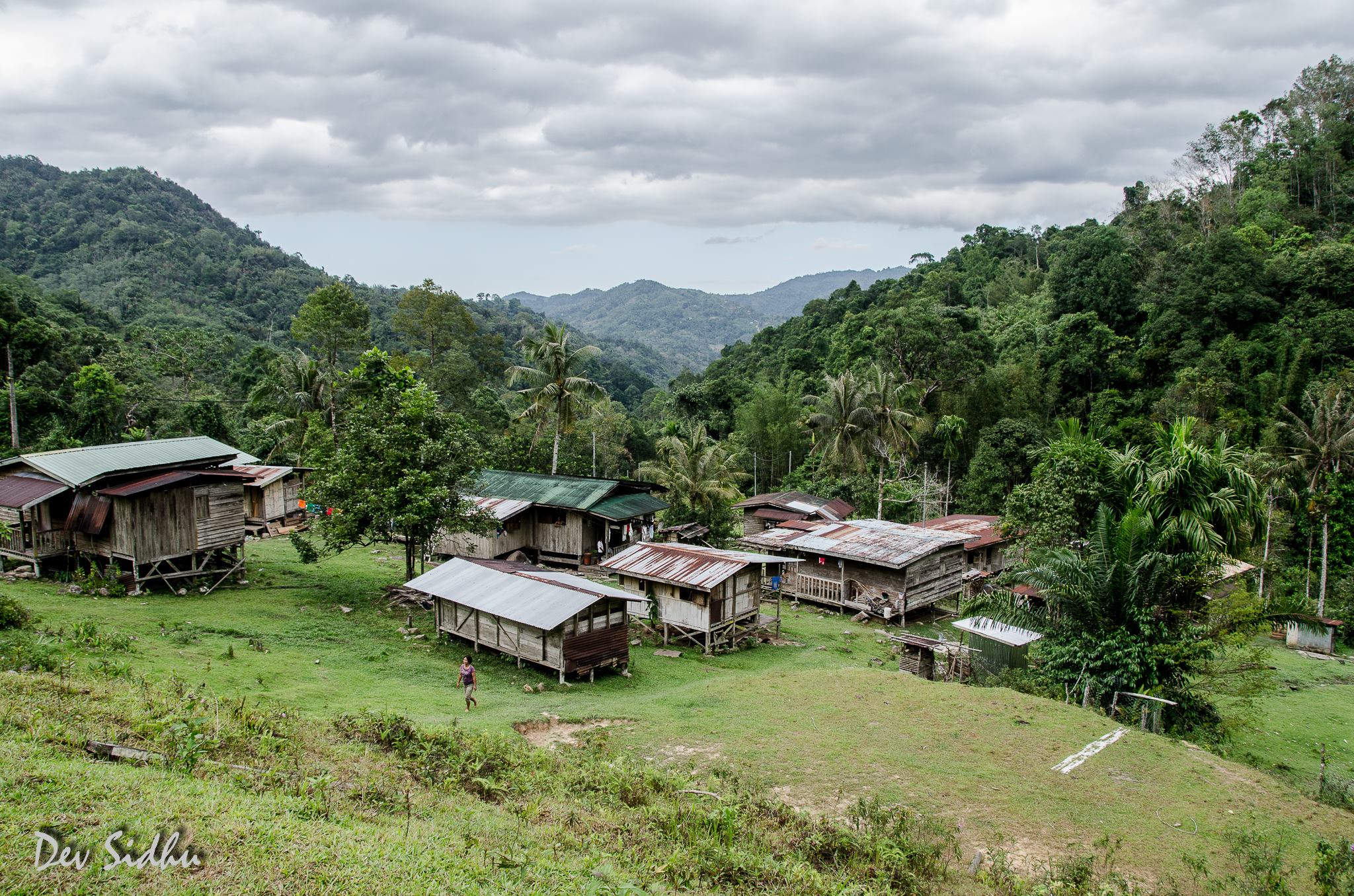
A settlement, somewhere deep in the jungle
So there came a part in the jungle, requiring skilful techniques – at one point we had to run 2 kilometres with 600 metres of ascent. Leaving the water point behind, we were cutting across an authentic village. In those few minutes when I was passing by among the houses I managed to notice that people living there probably lived totally cut off from civilisation, and in perfect harmony with Nature.
Back in the jungle a steep downhill climb was awaiting us. At some parts the vegetation was so overgrown that I could hardly find the path and had to sidestep fallen trees. Although the slope was long and steep, thanks to the cool temperature in the forest, climbing was much bearable than out there on the bulldozed road, in the heat of the sun. Besides, time passed by more quickly, because I had to move in an environment where each step and hold had to be chosen very carefully. There were huge colourful butterflies – the size of my two palms – flying around us. Above our heads monkeys were making the branches creak and the journey was made even more mystical by the sounds of birds and insects.
I reached the top in a pretty good shape and continued downwards for a while. Then came another climb up, obviously in the glaring sun. We were crossing the highest point of the trail, which offered us a perfect view in the direction of Mt. Kinabalu. Although the peak was already covered by dark clouds, we could see the lower parts towards the sea quite well. It was really shocking to see how the landscape, home to one of the most beautiful jungles in the world, became like a mosaic: all around I could see new cutting, burnt woods and pineapple plantations – larger areas of woods could only be found in the immediate surroundings of Kinabalu.
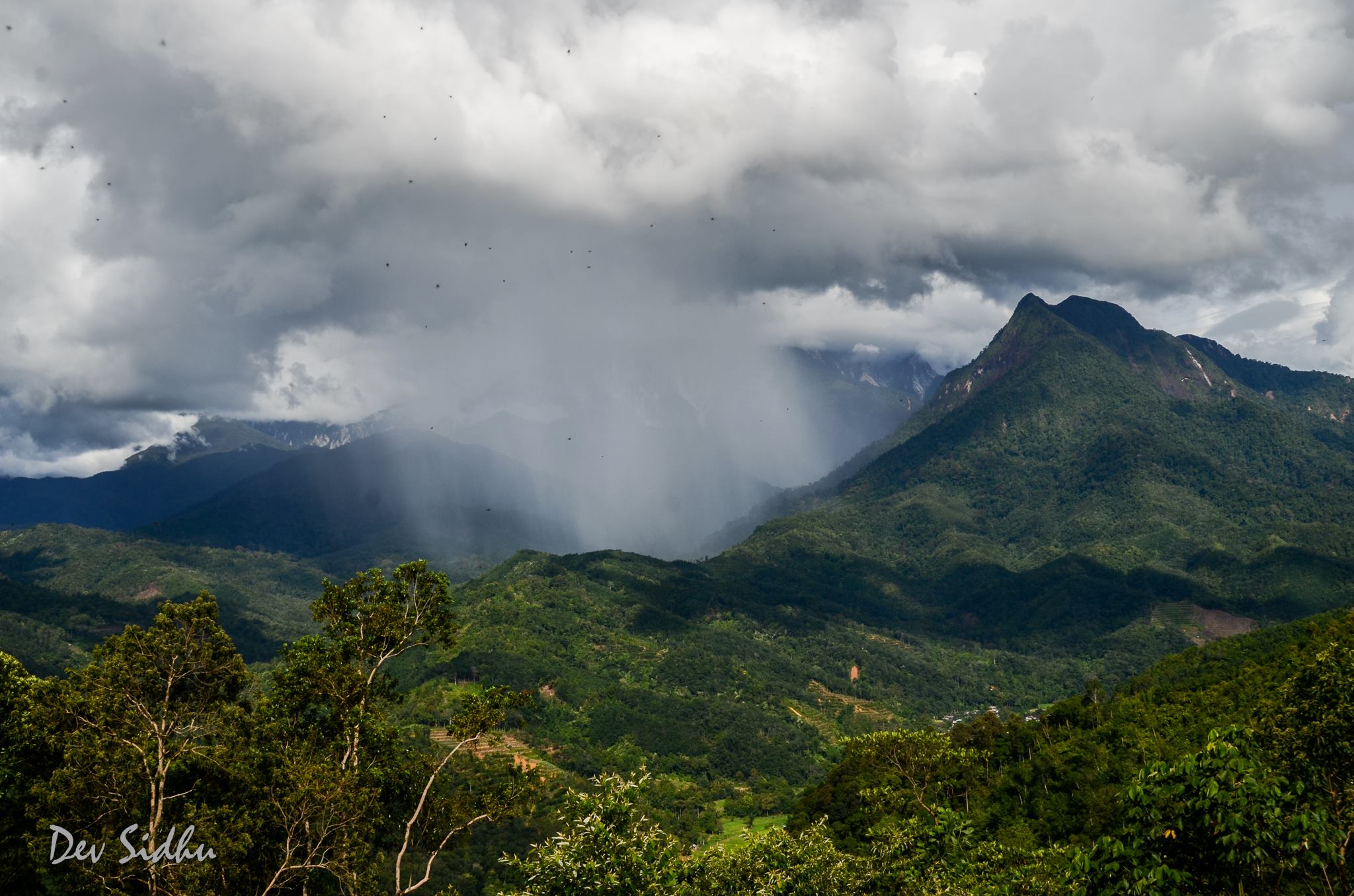
The storm is coming and with it cooler air and relief
I was leading again; Safrey was a good 20 metres behind me. Wherever I found a little streak or stream I stopped to splash water on myself and so did he. I could see he was suffering from the hot weather just as much as I did, and I reckoned the reason he let me lead was not convenience. It was plain to see: Probably I was in a better condition.
I reached the fourth water point at 44 kilometres in more than 6 hours and had only one gel left until the next point – some 10 kilometres away – where I had sent the second half of my supplies early in the morning.
There came another long downhill part with 500 metres descent but the steepness of the path was ideal for a relaxing run. As I got to the valley I ran over a suspension bridge and found myself in the middle of a wedding. Passing by the wedding guests with their smiling faces and loud cheers I felt as if I had already been crossing the finish line.
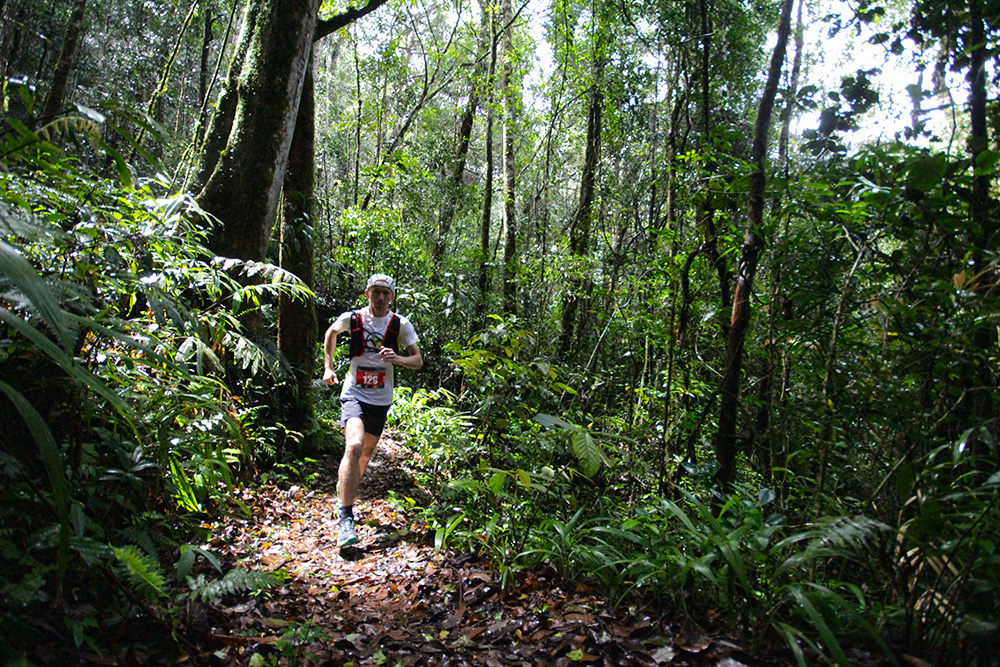
Into the deep forest
Next thing I knew I was running along a busy dirt road in the valley. Luckily all the cars pulled off so that I could run without obstacles, and all the people were waving and cheering for me. I reached the fifth check point very slowly. I had already covered half of the distance, completing 53 kilometres in 7 hours and 16 minutes – this meant that all in all I would probably finish in 15 hours. I was running out of energy and my watch had stopped.
I was so hungry that I saw stars, so I ate a bowl of food cooked on the spot; it was some kind of lentil soup with transparent noodles. Then I asked if they had any Cola and a woman pointed at a shop nearby. I thanked her with a smile and said I didn’t have any money on me. A few minutes later she came up to me with a small bottle of Cola. I told her how grateful I was and drank the whole bottle in a wink.
In the meantime, the package I had sent ahead at the start arrived, and I squeezed everything I could find in it into my backpack. Safrey also arrived and gobbled up a huge bowl of pasta – but I was already on my way.

The forest under a vapour blanket
I had to run uphill to the next check point. Although there had been storm clouds around me for hours, somehow the sky had been clear above my head – up until that point. There came the downpour and refreshed me. I expected to be soaked wet in a splurge and was surprised to feel slow, sprinkling rain on my skin, so I didn’t get wetter than I had been before.
I was running along a wide bulldozed road again and didn’t really miss the jungle with its overgrown vegetation and leeches. As the air was getting cooler because of the rain, I was getting into a better and better condition. I reached the peak pretty fast and continued on a wavy ridge. In Hungary worms come up to the surface of the soil after rain, here there were gigantic, palm-sized millipedes everywhere.
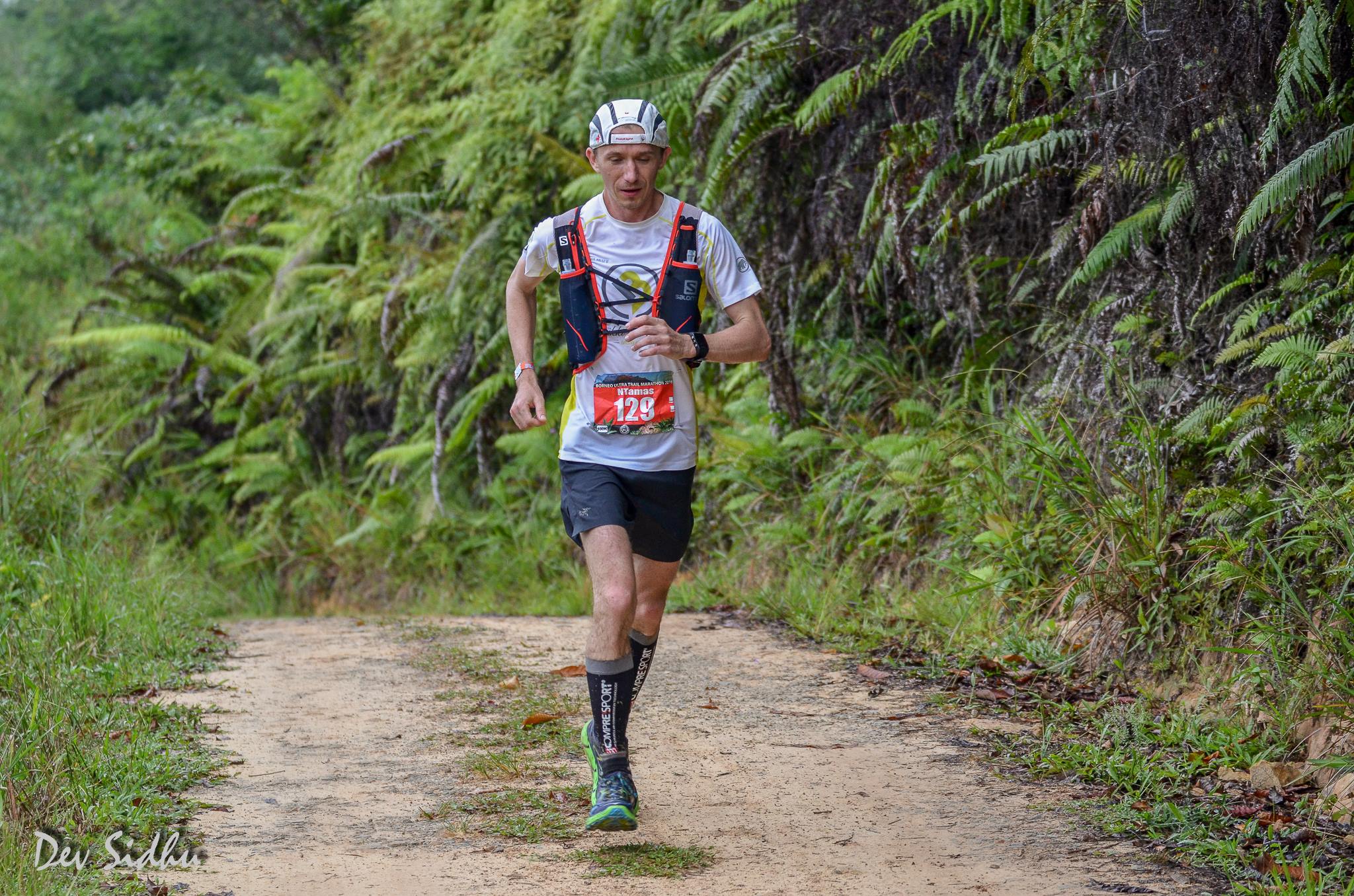
It’s getting colder
I was passing by a plantation and heard characteristic drumming coming from one of the houses. I was quite surprised later when I realised that this drumming could be heard for hours all over the ridge, and sounded so infinite that I doubted ever being able to reach the next point. The bulldozed road gave place to a narrow path covered in thick vegetation. I couldn’t see any more what reptiloid creatures I was stepping on and I had to stop every minute to check whether there were any leeches on my legs.
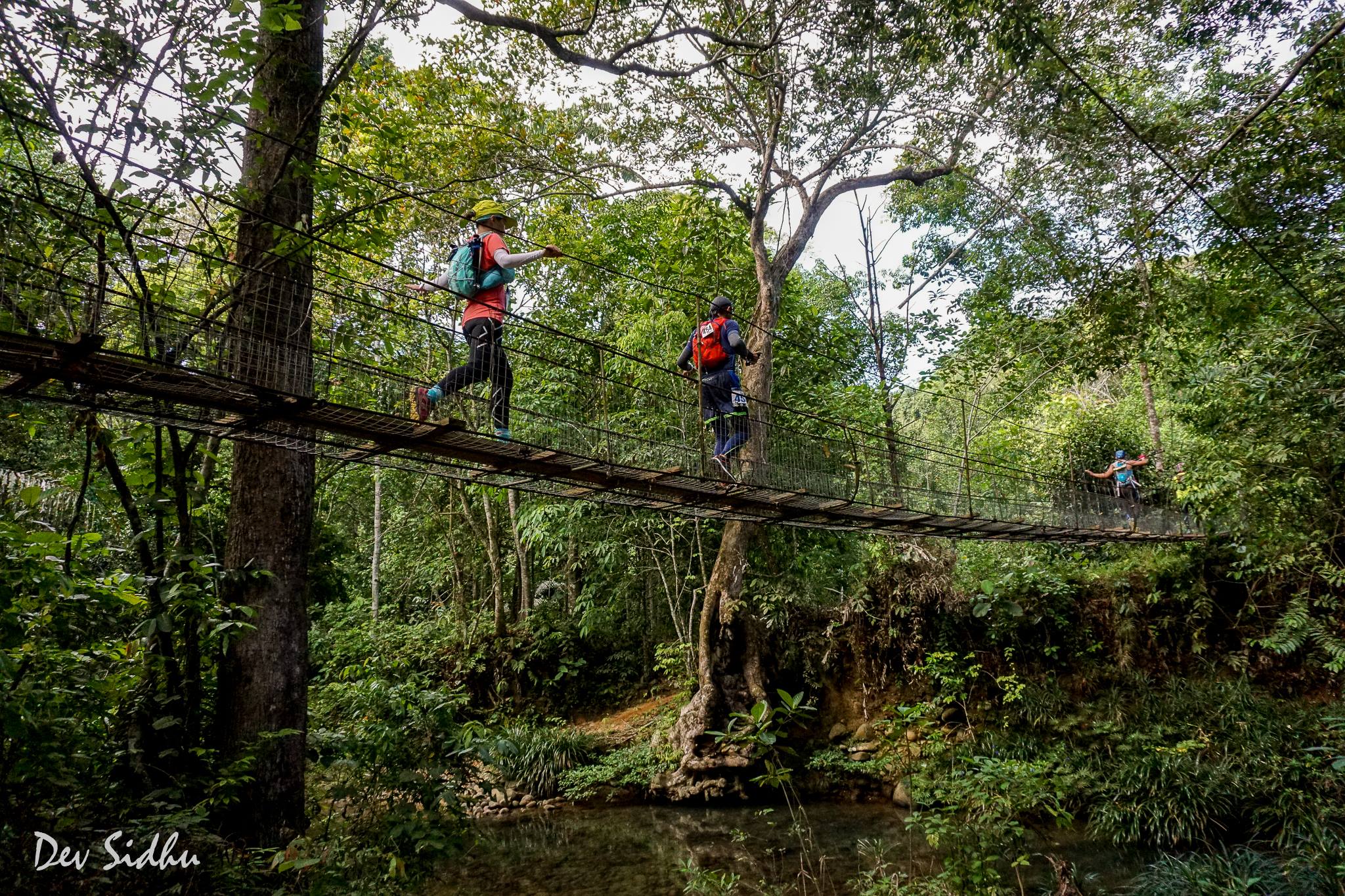
Hanging bridge
Fortunately leeches avoided me, but owing to the wet underwood my shoes were totally soaked all the time. After 8 hours of continuous running the skin on my feet was so soggy that it became chapped and it hurt so much as if I had had water blisters on them. The only positive thing in my situation was that except for the steeper ascents I could still run. I had a feeling I was making good progress. I soon reached the checkpoint at 60 kilometres, where I could refill my bottles and recharge myself.
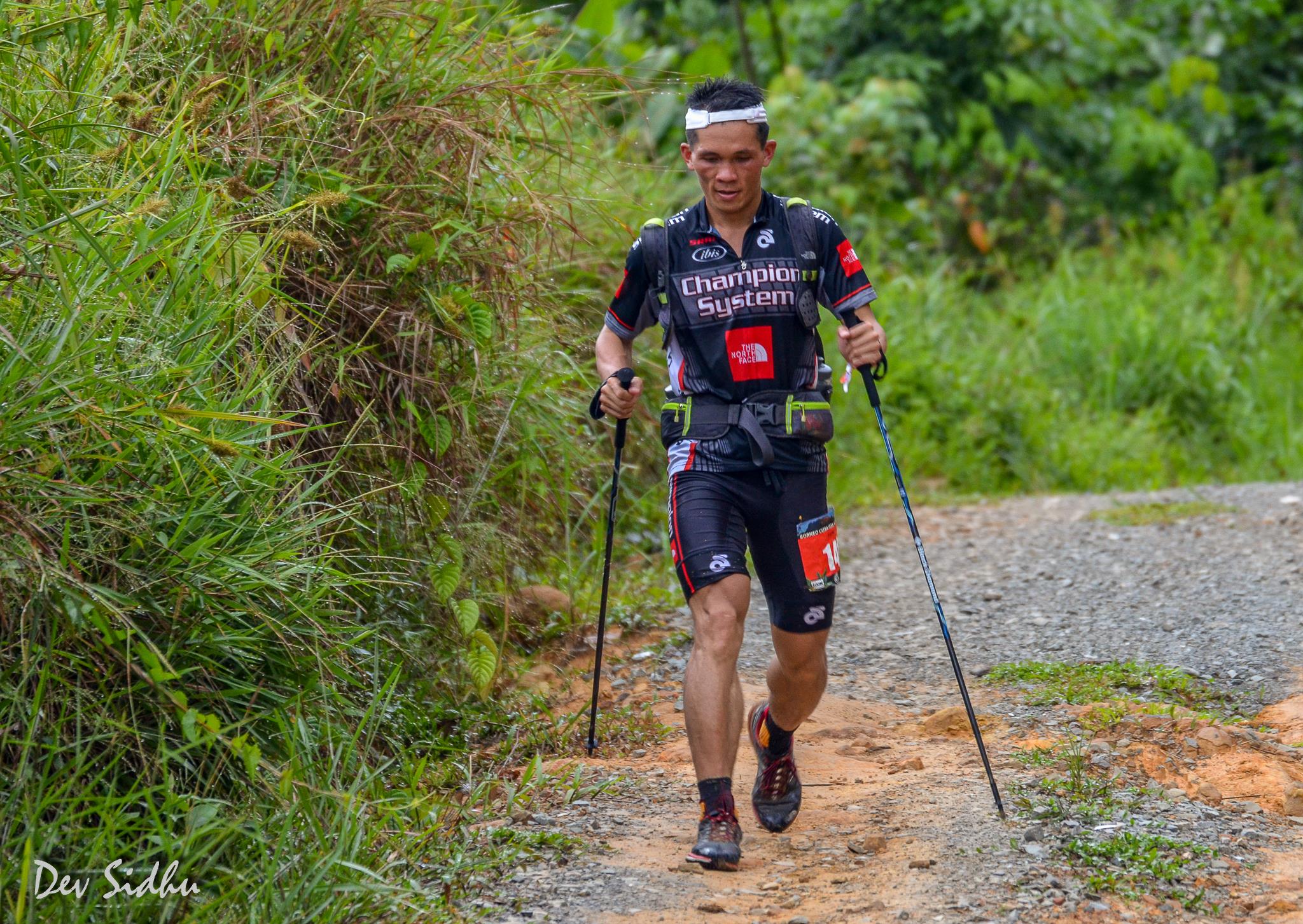
Safrey Sumping. Opponent, competitor and friend
Leaving the checkpoint my zest didn’t last long: after a few hundred metres I threw up all the water I had drunk at the point, and needed a few minutes to get ready again and continue without feeling sick. The path to the next check point was quite an easy run; it was leading through a valley, often among smaller villages and plantations. Near the villages I came across a lot of dogs strolling free; luckily they were only barking at me but didn’t cause any problems.
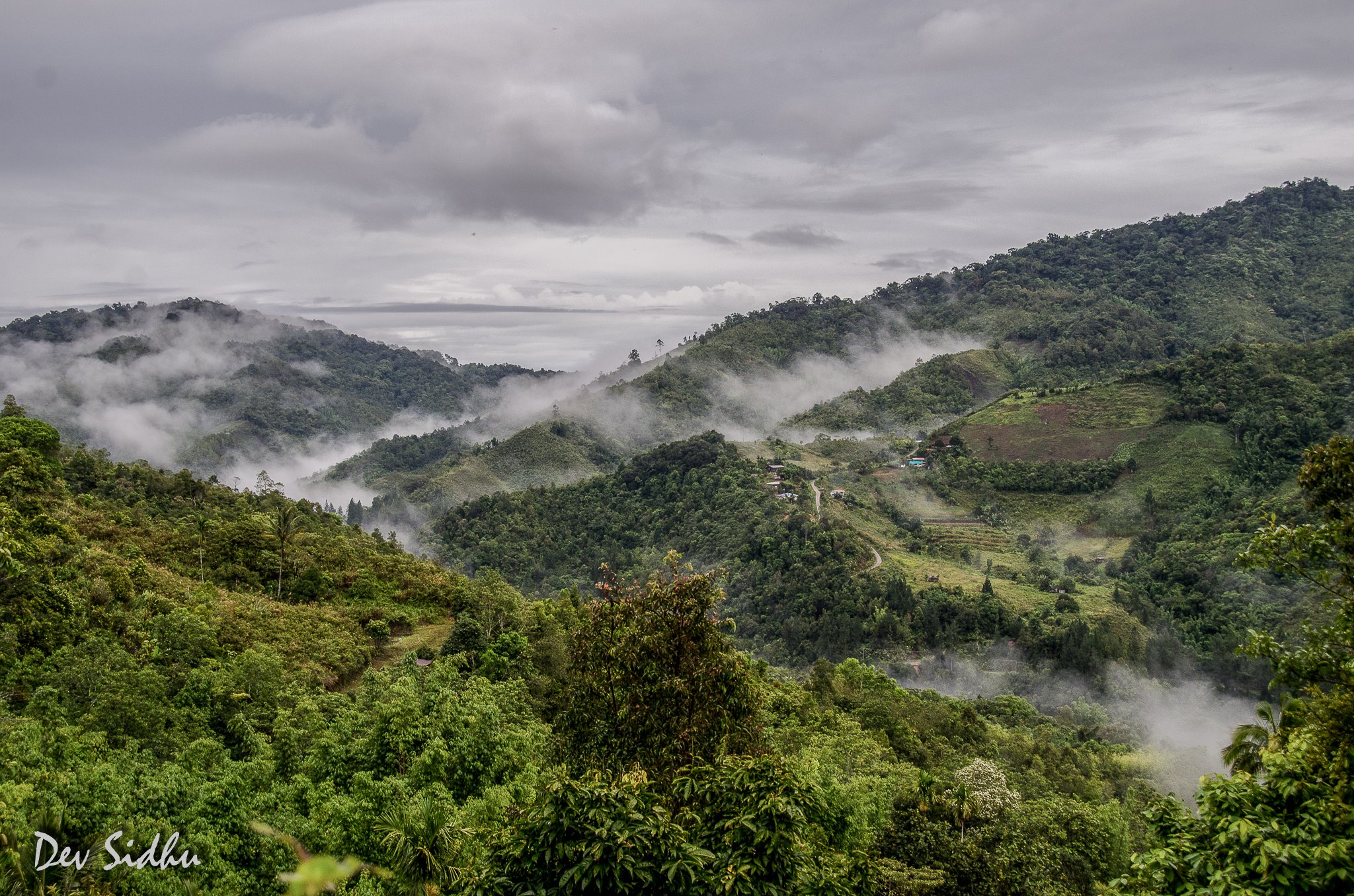
Panorama view after the rain
I reached the 76th kilometre in a bit less than 11 hours, and this was the point when darkness fell on me. Next, I was supposed to run a 7-kilometre circle and get back to the same check point. I glanced at the organisers’ map and set off to run that circle. I quickly took a gel, went over a suspension bridge, and was running in a very good shape and at a great pace uphill, first on a concrete road, then on a good quality dirt road. After 2 kilometres, the ribbons directed me into the jungle. Now I needed my head torch. This part of the trail was marked by retro-reflective signs, which were well visible from a distance in the dark, by the light of my torch.
In the forest I had to run up a steep, narrow path. As I was farther and farther away from the check point I was becoming increasingly worried, not knowing if I had being following the right track. I couldn’t recall having heard about such a stiff climb in this part and, as it was supposed to be a circle, I could hardly wait returning to the starting point. In contrast, I was climbing higher up on the increasingly steep slope, and there was no sign of a turn whatsoever.
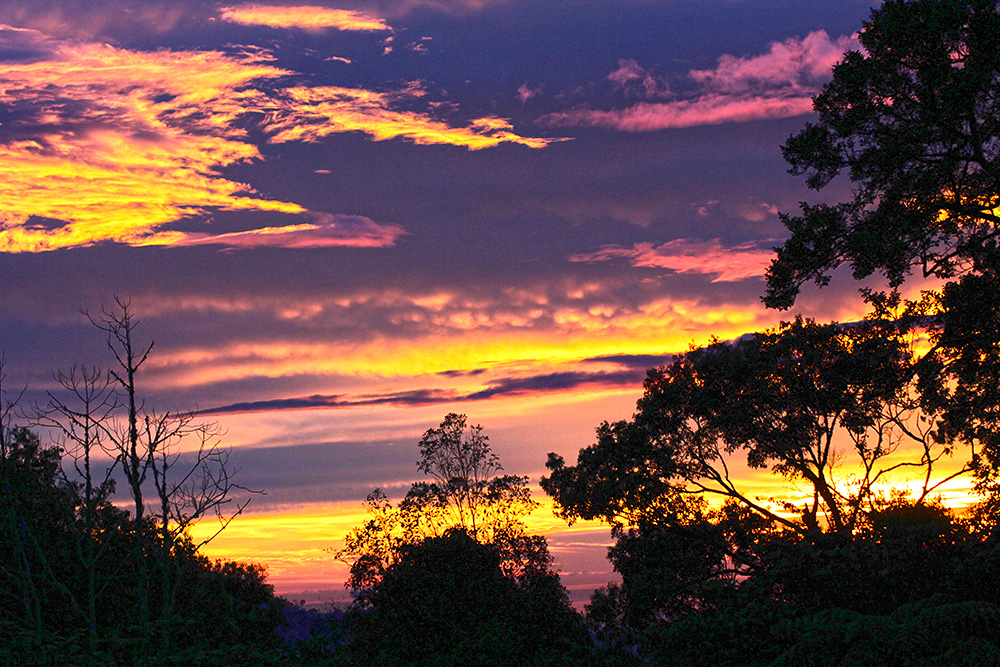
As the sun sets, the dark night covers me and brings bad luck
I had been in pretty good shape up until this point and begun to feel the sweet taste of victory – and this is when I usually get hit on the head, big time.
Soon I found a piece of paper on the ground, and it turned out to be a sign for the 50K race. All of a sudden, I remembered that the 50K contestants were following a different route, which meant I was probably running backwards on that very route. My blood sugar level dropped below zero, I totally freaked out. I turned back and started to climb downwards. As the path was muddy and wet at several parts, sometimes I had to slide down on my back or bottom. My victory run suddenly turned into a desperate rampage. I was hoping to run across Safrey and be wrong about going the wrong way.
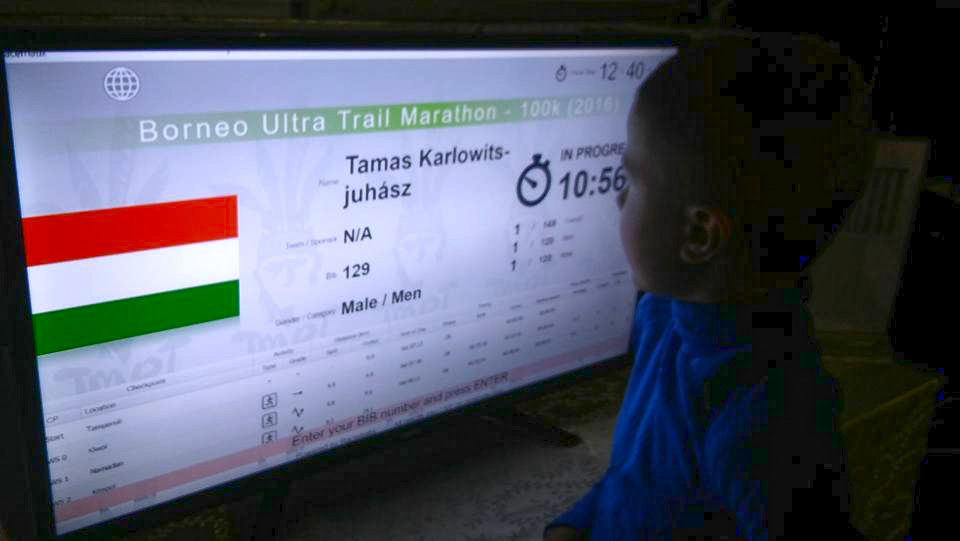
Still waiting
I was descending in complete darkness and, coming out of the forest, I ran back to the check point as fast as I could. More than an hour after I left, I was standing at the suspension bridge again and finally met Safrey. I was utterly shattered and he was puzzled to see me there. When I told him I had turned back, he reassured me that I was going in the right direction and gave me a banana, lest I should faint on the spot.
So off I went again to do the circle, this time with Safrey. Knowing much more about the landscape than I did, he took two skiing sticks with him, and I was blaming myself angrily not to have thought about such a trick. When I reached the muddy part, I looked for a seemingly suitable bamboo tree and broke off two branches for sticks, which could help me climb the slippery slope. We went past the peak where I previously turned back. Then came a steep downhill section. The rain made the soil so muddy and slippery that I couldn’t even stand straight on it. Descending felt much more like skiing than running, because the only way to go down was by attempting to slide a few metres at a time.
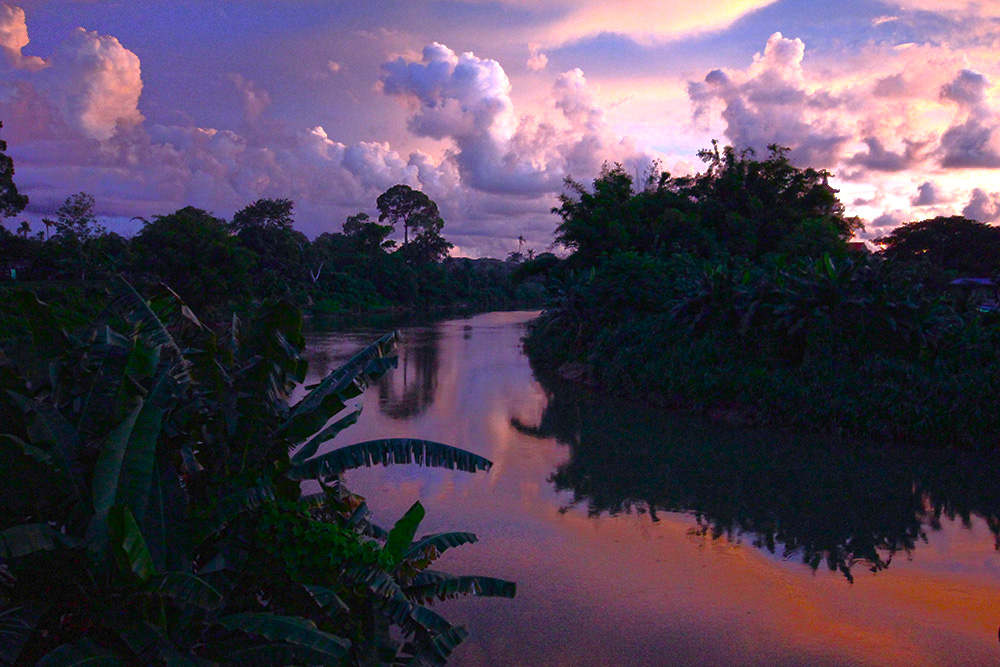
Last colors of the bridge
The 7-kilometre circle seemed to be infinite, but I somehow reached the check point again, for the third time. Of course there was no other check point anywhere near, although probably no one knew that. My little detour took me 2 hours and 44 minutes, so I missed the chance to finish in 15 hours. Yet, I felt more at ease, sure I still had hope to be the first to finish.
I left the check point calm and focused, leaving Safrey behind again. Luckily it had stopped raining, and the temperature remained pleasantly cool. The track was going through a valley, along some plantations and a few villages here and there. The river running in the valley had to be crossed on suspension bridges several times; some of these bridges were in such a bad condition that I dared not step on the boards, in fear they might break under my weight. My head torch could hardly light the muddy river flowing slowly below me. I was quite scared to imagine what could have happened if one of the bridges had fallen and I had been carried away by the coffee-brown water.
I got to the 92nd kilometre in 15 hours and was greeted there by the main organiser, informing me I was the leader. As I ran out of refreshments, I grabbed a banana and set off for the final section.
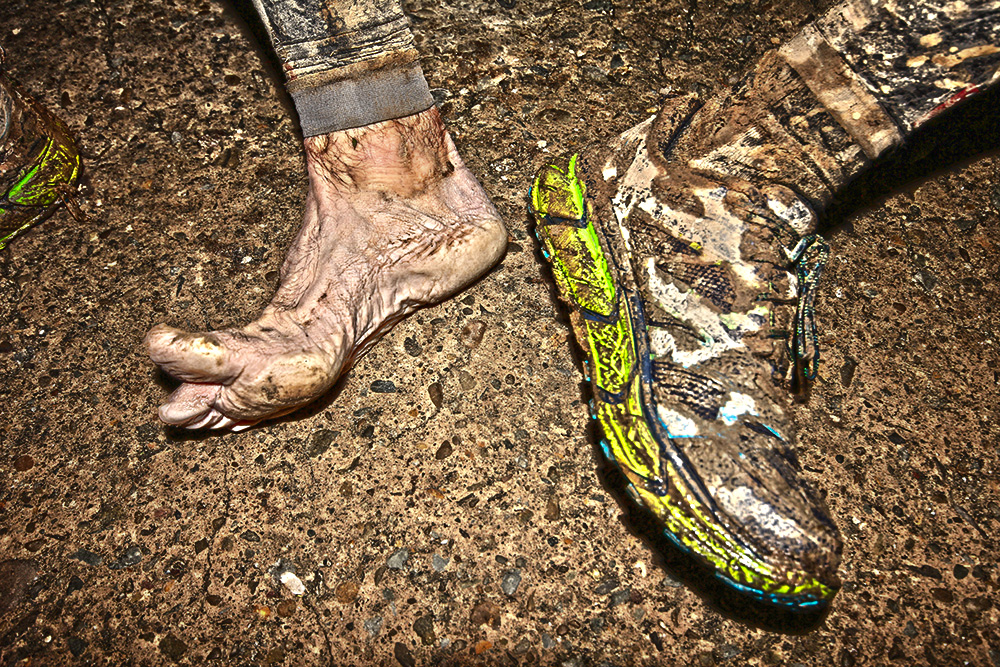
Sponge rubber foot, after 16 hours of soaking
Again, it seemed like an infinite road. I caught up with some of the runners on the 50K race but met no one else. In the distance I could already see some orangey light, possibly the lights of Tamparuli. I tried to run as much as I could because my whole body was aching and I could hardly wait the finish line. I had been running for almost an hour when I finally reached a concrete road and caught a glimpse of the tent marking the finish on the other side of the river.
The finish was neither sublime nor elevating, despite the fact that I was the first among the 100K runners to cross the finish line. I completed the 100 kilometres in 16 hours and 7 minutes, which had probably been my worst performance ever. There were only a dozen people awake but they all smiled and congratulated me. In the tent there was a monitor showing the live broadcast with my data on it. I got the gold medal and a finisher T-shirt, then washed myself in Spartan circumstances. Marci had already fallen asleep in the tent. We called our chauffeur, because I was desperately yearning to go to bed soon. We talked a little with one of the organisers, then came Safrey crossing the finish line; we said goodbye and off I went to bed.
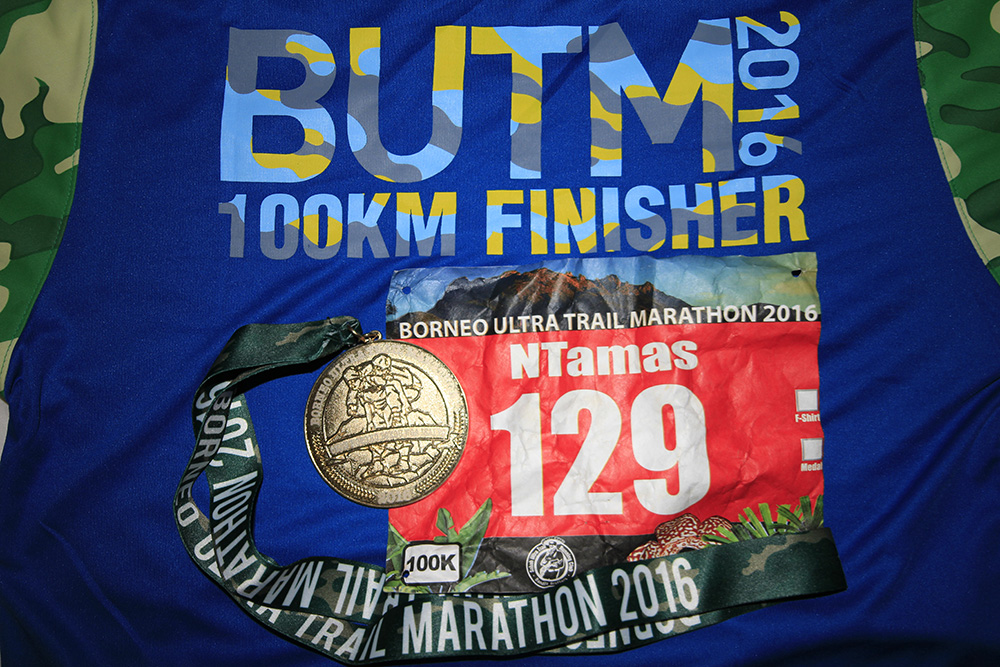
The reward for a long long run
Weeks after the race, with my head cleared and my thoughts organised, all I can say is that everything happened the way I planned. The race was just like I expected it to be: wild and wonderful at the same time. The conditions were making finishing very difficult – I can’t recall any easy moments whatsoever. After several weeks of acclimatisation in the tropics there is one thing I’m sure of: there’s no way you can fully acclimatise for such a tropical race, because with each day I spent at home I was in a worse and worse shape.
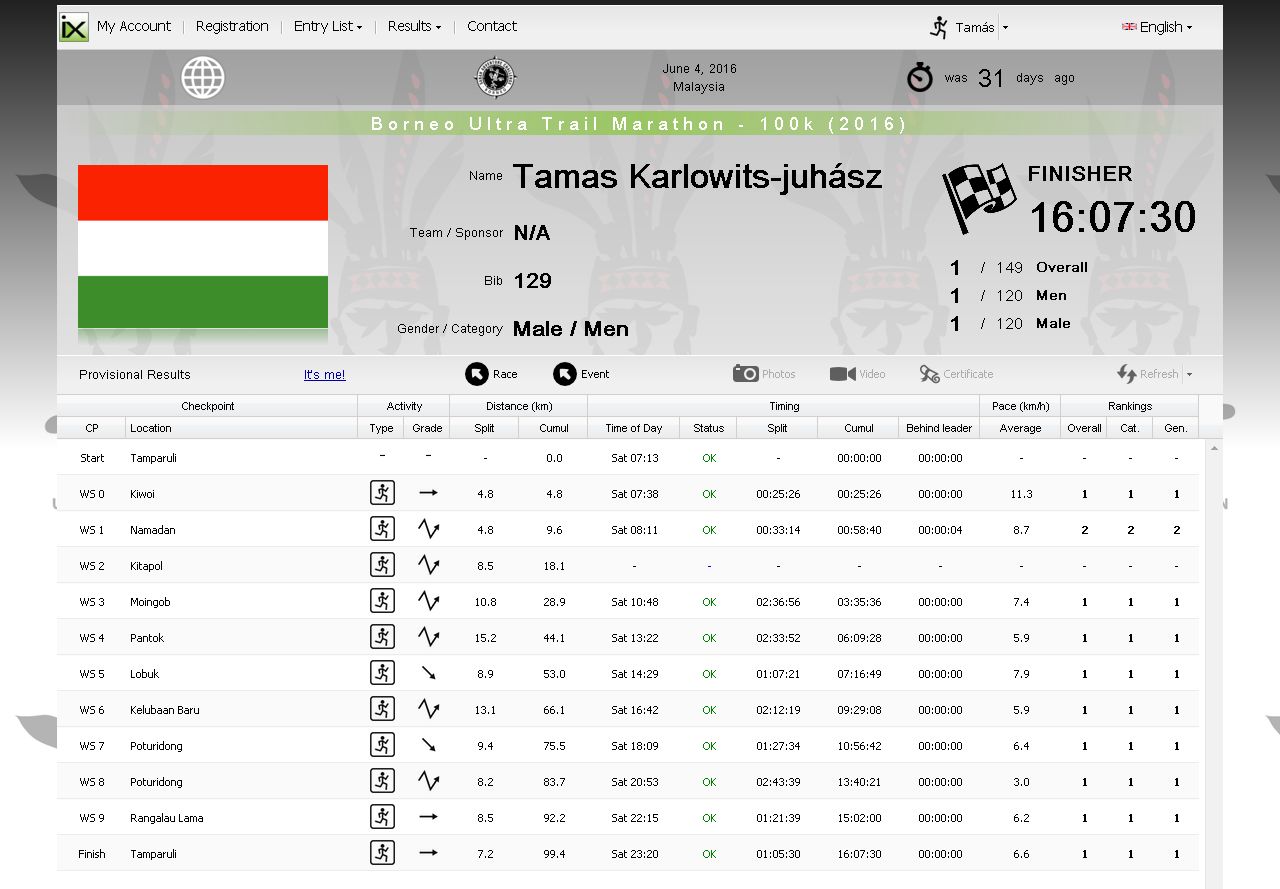
Result
Result
Pictures: Dev Sidhu. Thank you for your amazing pictures!

